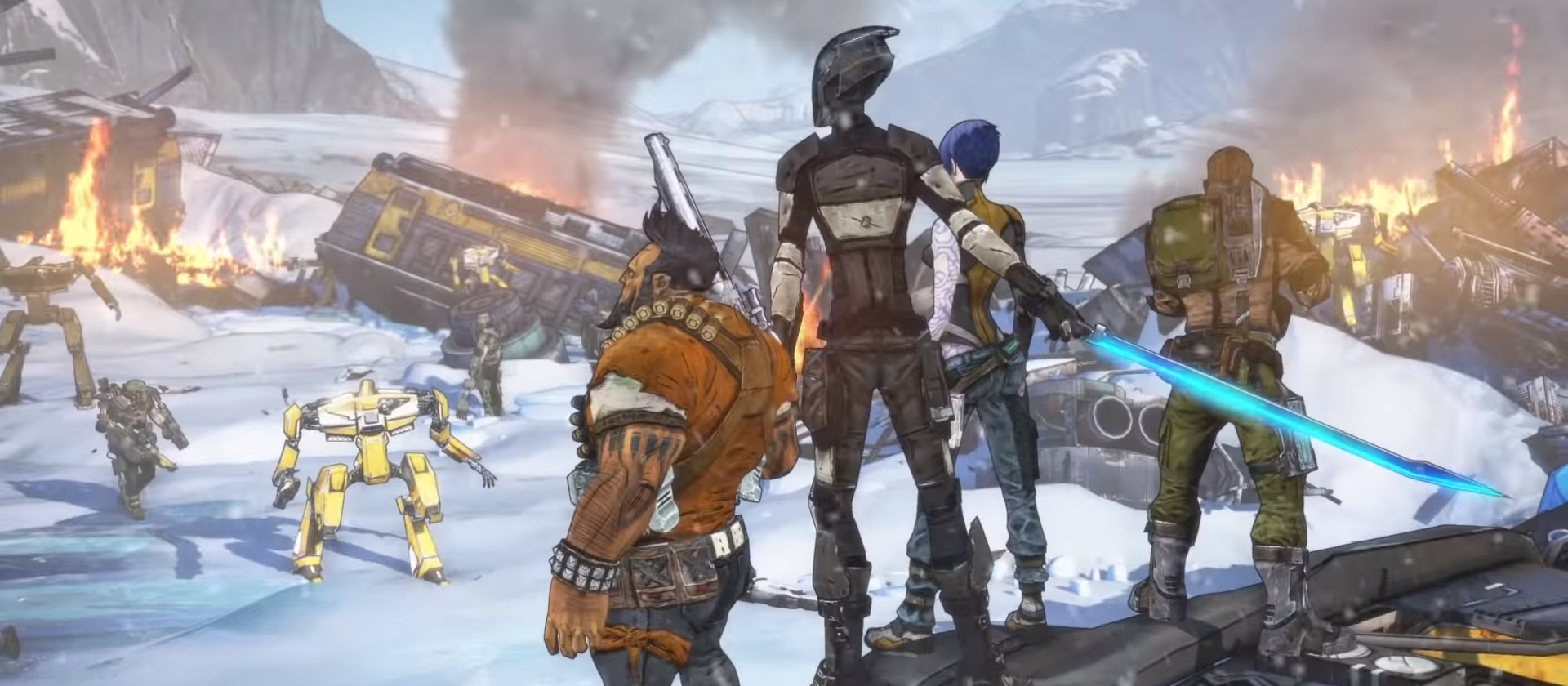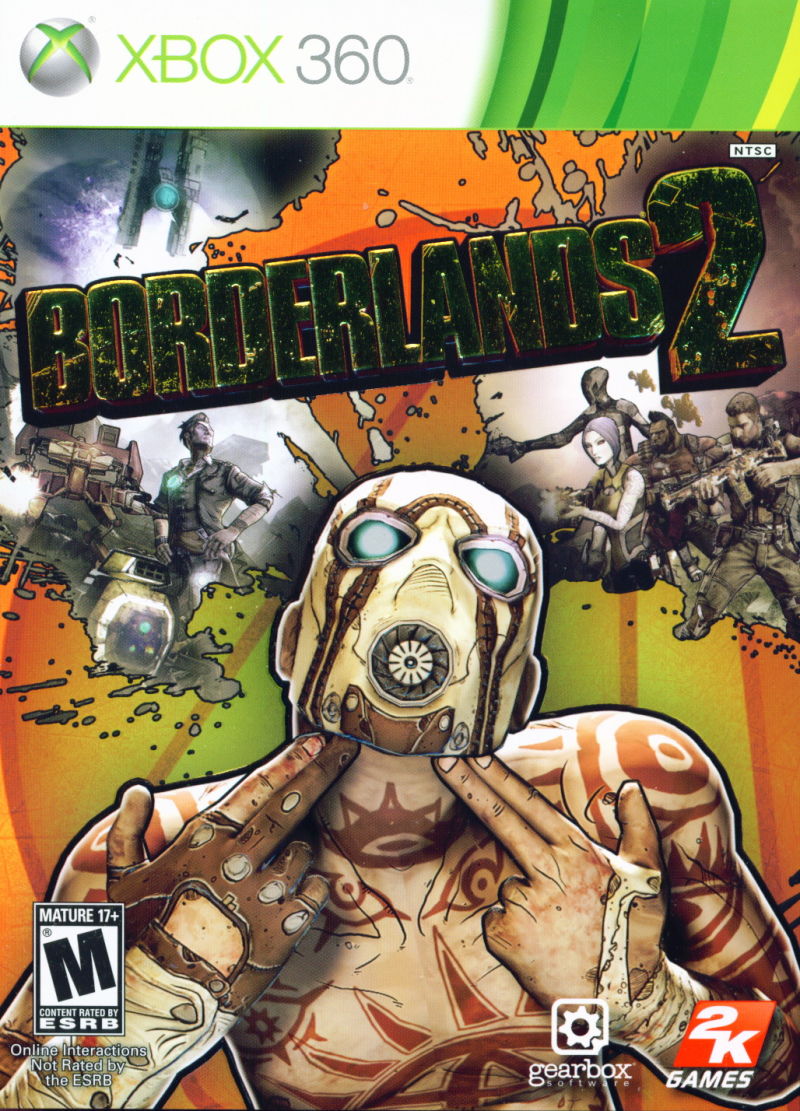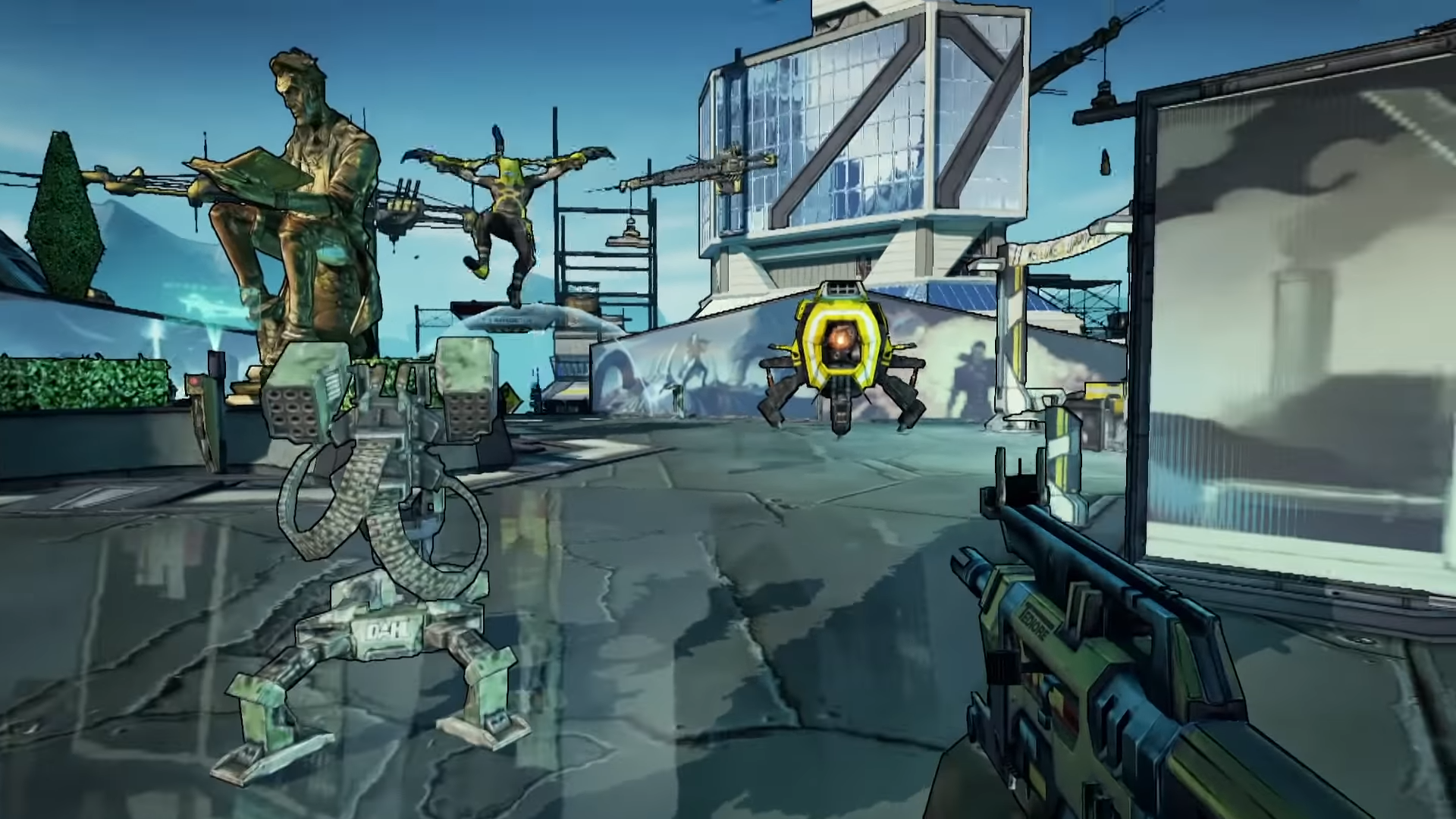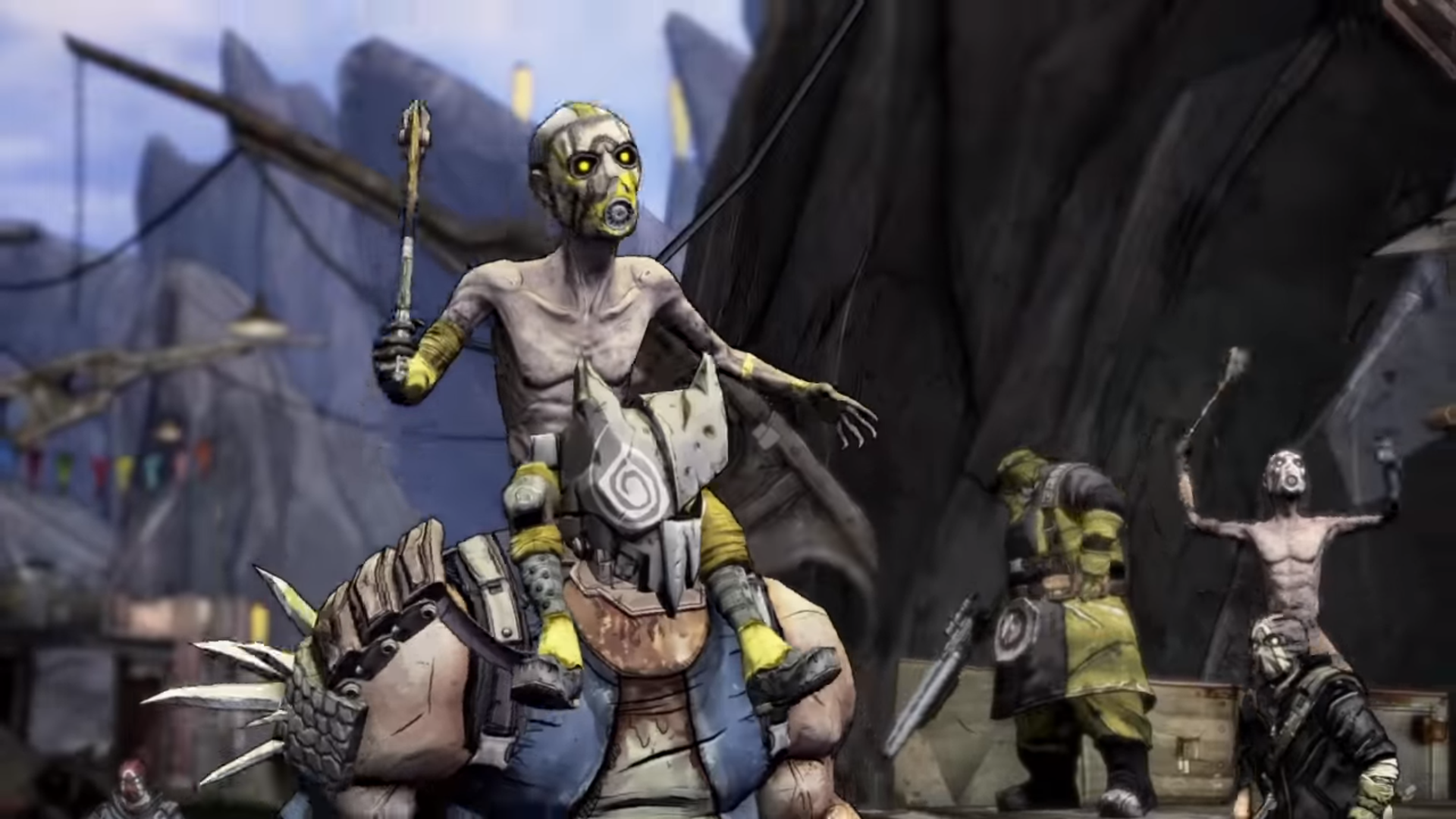

“Lady’s got a gut full of dynamite and a booty like POW!”
Call me a persnickety, but I can’t bring myself to lavish Borderlands 2 with the praise that it probably deserves. The simple fact is I’m a solitary gamer and the true pleasures of this more-is-better sequel from Gearbox are seemingly only accessible through the multiplayer experience. At least that’s how I perceive things from my time playing through it all by my lonesome.
It’s been a while since I played Borderlands, but if memory serves it worked quite well as a single player experience. Indeed, though I spent a goodish number of hours cooperatively rampaging across Pandora the first time around, I completed the game mostly on my own. And I reconnoitered every nook and cranny that game had to offer, believe me. I tried to do the same thing with Borderlands 2, but either my tolerance and tastes have massively shifted in the intervening years (certainly plausible) or Gearbox has tailored their sequel to the multiplayer market.
This is most apparent in the game’s reliance on teammate revival. Once you’ve been stripped of your shields and health, you enter a last stand scenario where you’re given a handful of seconds to crawl around and fire your weapon. When playing cooperatively, another player can simply revive you and play continues. Or, worst case scenario, you expire and respawn away from the action then return to the fray. When playing solo, once you’re downed you must take out a nearby enemy to replenish your health and pop back onto your feet. All of that’s a holdover from the original, but the execution here isn’t sufficiently calibrated for the solo gamer. Maybe my gaming skills have rapidly deteriorated, or maybe I’m just impatient, but quite often I found myself laying on my back, the frame bobbing drunkenly as enemies scampered to hiding spots to watch me bleed out.
That isn’t in and of itself a major hindrance. Respawns don’t revert to a checkpoint, so any progress remains mostly intact (though boss’s on the brink of defeat will be at full health when you return to them). But what dampens the experience considerably is that it is used in conjunction with an unbalanced leveling system that sees the player constantly under- or over-leveled for the scenarios they are facing. I, for one, don’t particularly enjoy repeatedly beating my head against the wall, which is what it feels like to run into an area you’re not properly leveled to confront. You’ll take out a few Midgets, a Psycho or two, a Loader Robot or a Varkid, maybe even a Goliath (one thing Borderlands 2 does well is enemy variety), but when you’re facing off against a couple dozen of them all bum-rushing you at once, you’re in for a few rinse/repeat cycles. Good luck smelling the roses along the way.

Not exactly my idea of fun, but neither is the other option: grinding out side missions to level up. Again, though, mild grinding itself isn’t inherently problematic. Indeed, numerous side missions here, including the bevy of DLC missions, provide many memorable moments (fighting a giant snowman, helping Tiny Tina arrange a diabolical tea party, sabotaging a bandit volleyball game, starting a gang war at Ellie’s behest). The problem is that there’s only a small window during which you are appropriately leveled for the combat to be satisfying. Once you’ve leveled up too much those previously impenetrable areas become cakewalks, which is only enjoyable for a few minutes. At root, it’s the stats-based approach that continually undercuts Borderlands 2, neutralizing its first-person immersion and gunplay in favor of the addictive qualities of its loot and leveling systems. And to clarify, I’m not complaining that the game is too hard; it’s not really that hard at all if you exploit its system. It’s that the playstyle forced on the solo gamer doesn’t stack up against my perception of the multiplayer experience. The co-op gamer’s dopamine hits come from camaraderie and high octane action; the solo player must settle for the masochistic process of acquiring the ultimate character build.
When you’re in that sweet spot, though, Borderlands 2 is a blast to play. In these stretches, which appear with more frequency the further you progress in the game, everything falls into place and the game realizes its promise, however fleetingly. Its shoot and loot gameplay loop provides a rush of excitement as players clear new areas and discover variations on the game’s ludicrous abundance of weapon types. Its diverse environments and cel-shaded graphical style prop up the comic book action. Its quirky humor, even more peculiar and obnoxious than before, undergirds its extravagant storytelling, which proves a step up from the original game’s afterthought of a narrative even while building upon it. Even the mechanics I just complained about largely function as they should.

As with the first game, though, the thrill eventually wears itself out. The tedious analysis of weapons becomes a chore, clearing out previously conquered areas for the umpteenth time lacks challenge and excitement, quests begin to feel mundane and repetitive, opening eight lootboxes to find $27 and a box of shotgun shells rises to the level of existential aggravation. At a certain point I found myself sprinting past all foes, bristling with low-grade antipathy as I sought only to reach objective markers; a Pavlovian dog dutifully responding to my conditioning rather than a human being enjoying a game in his free time—a sure sign that it was time to put the game down. Nevertheless, this listless irritation didn’t set in until I had already sunk a couple dozen hours into the game and become enamored by its absurd characters and puckish humor. Turning over every stone requires falling into a stupor in which the game’s myriad shortcomings are ignored, a dull challenge I’m not particularly inclined to undertake all at once (if at all). Your mileage may vary.